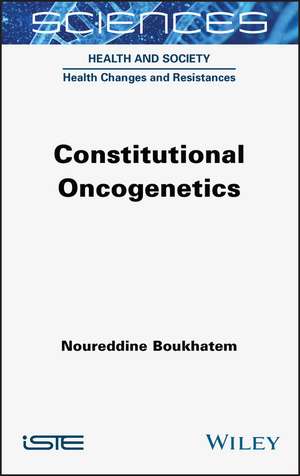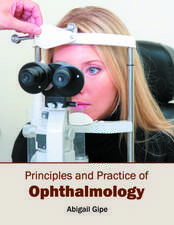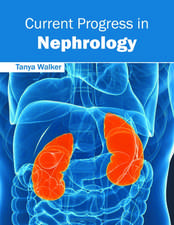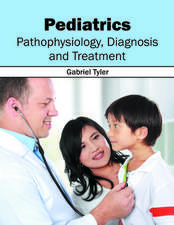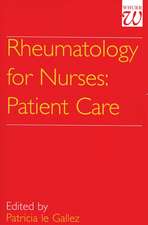Constitutional Oncogenetics
Autor N Boukhatemen Limba Engleză Hardback – 15 apr 2021
Preț: 985.97 lei
Preț vechi: 1037.86 lei
-5%
Puncte Express: 1479
Preț estimativ în valută:
174.56€ • 203.25$ • 151.64£
174.56€ • 203.25$ • 151.64£
Carte tipărită la comandă
Livrare economică 24 februarie-10 martie
Preluare comenzi: 021 569.72.76
Specificații
ISBN-13: 9781789450163
ISBN-10: 1789450160
Pagini: 288
Dimensiuni: 156 x 234 x 17 mm
Greutate: 0.57 kg
Editura: ISTE Ltd.
Locul publicării:Hoboken, United States
ISBN-10: 1789450160
Pagini: 288
Dimensiuni: 156 x 234 x 17 mm
Greutate: 0.57 kg
Editura: ISTE Ltd.
Locul publicării:Hoboken, United States
Cuprins
Foreword xvii
Introduction xix
Part 1. Major Syndromes 1
Chapter 1. Hereditary Breast and Ovarian Cancer Syndrome Including Isolated Ovarian Cancers 3
1.1. Introduction 3
1.2. Prevalence 4
1.2.1. Genetic risk assessment criteria 5
1.3. Indications for genetic testing 8
1.4. Tumors 8
1.4.1. Breast 8
1.4.2. Ovaries 10
1.5. Genes 12
1.5.1. BRCA1 12
1.5.2. BRCA2 12
1.5.3. CHEK2 12
1.5.4. PALB2 13
1.5.5. NBN 13
1.5.6. BARD1 13
1.5.7. BRIP1 13
1.5.8. RAD51C 14
1.5.9. RAD51D 14
1.6. Genotype-phenotype correlations 14
1.7. Penetrance 15
1.8. Mode of transmission 17
1.9. Risks to family members: special consideration 17
1.10. Monitoring 18
1.10.1. Women 18
1.10.2. Men 20
1.10.3. Men and women 20
1.10.4. Risks to relatives 20
1.10.5. Reproductive options 21
Chapter 2. Lynch Syndrome 25
2.1. Introduction 25
2.2. Prevalence 27
2.3. Genes 28
2.4. Genotype-phenotype correlations 28
2.5. Penetrance and survival 29
2.6. Long-term prevalence of cancer in LS patients 30
2.7. Mode of transmission 33
2.8. When to suspect LS 33
2.8.1. Amsterdam II criteria 33
2.8.2. Criteria to help identify families with LS 33
2.8.3. Revised Bethesda criteria 34
2.8.4. Spectra and syndromes 34
2.9. Tumors 35
2.9.1. Colorectal cancer 35
2.9.2. Endometrial cancer 36
2.9.3. Bladder and urothelial tract 36
2.9.4. Dermatological tumors 37
2.9.5. Pancreatic tumors 38
2.9.6. Tumors of the ovary 38
2.9.7. Brain tumors 38
2.10. Monitoring 39
2.10.1. Colorectal cancer risks 39
2.10.2. GC risks 40
2.10.3. Risks of endometrial and ovarian cancer 40
2.10.4. Risks to the bladder and urothelial tract 41
2.10.5. Risks of dermatological tumors 42
2.10.6. Risks for other types of cancer 42
Chapter 3. Neurofibromatosis 43
3.1. Introduction 43
3.2. Neurofibromatosis type 1 43
3.2.1. Introduction 43
3.2.2. Prevalence 43
3.2.3. When to suspect NF1 44
3.2.4. Tumors 44
3.2.5. Gene 45
3.2.6. Genotype-phenotype correlations 46
3.2.7. Penetrance 46
3.2.8. Mode of transmission 47
3.2.9. Monitoring 48
3.3. Neurofibromatosis type 2 49
3.3.1. Introduction 49
3.3.2. Prevalence 51
3.3.3. When to suspect NF2 51
3.3.4. Tumors 51
3.3.5. Gene 52
3.3.6. Genotype-phenotype correlations 52
3.3.7. Penetrance 53
3.3.8. Mode of transmission 53
3.3.9. Risks to family members 53
3.3.10. Monitoring 54
3.4. Schwannomatosis 55
3.4.1. Introduction 55
3.4.2. Prevalence 55
3.4.3. When to suspect schwannomatosis 55
3.4.4. Tumors 55
3.4.5. Genes 56
3.4.6. Genotype-phenotype correlations 57
3.4.7. Penetrance 57
3.4.8. Mode of transmission 57
3.4.9. Monitoring 58
Chapter 4. Familial Adenomatous Polyposis 59
4.1. Introduction 59
4.1.1. FAP 59
4.1.2. AFAP 60
4.1.3. MAP 60
4.1.4. NAP 60
4.1.5. PPAP 60
4.2. Prevalence 61
4.2.1. FAP 61
4.2.2. MAP 61
4.2.3. NAP 62
4.2.4. PPAP 62
4.3. When to suspect FAP 63
4.4. Tumors 63
4.4.1. FAP 63
4.4.2. MAP 64
4.4.3. NAP 65
4.4.4. PPAP 65
4.5. Genes 65
4.5.1. APC 65
4.5.2. MUTYH 66
4.5.3. NTHL1 66
4.5.4. POLE and POLD1 66
4.6. Genotype-phenotype correlations 67
4.6.1. FAP 67
4.6.2. MAP 67
4.6.3. PPAP 68
4.7. Penetrance 68
4.7.1. FAP 68
4.7.2. MAP 68
4.7.3. PPAP 68
4.8. Mode of transmission 68
4.9. Monitoring 68
4.9.1. FAP 68
4.9.2. Monitoring of extracolonic cancer 69
4.9.3. MAP 70
4.9.4. NAP 70
4.9.5. PPAP 70
Chapter 5. Endocrine Neoplasia 73
5.1. Introduction 73
5.1.1. MEN1 73
5.1.2. MEN2 73
5.1.3. MEN4 74
5.1.4. HPT-JT 74
5.2. Prevalence 75
5.3. When to suspect endocrine neoplasia 75
5.4. Tumors 76
5.4.1. MEN1 76
5.4.2. MEN2 77
5.4.3. MEN4 77
5.4.4. HPT-JT 78
5.5. Genes 78
5.5.1. MEN1 78
5.5.2. RET 78
5.5.3. CDKN1B 79
5.5.4. CDC73 79
5.6. Genotype-phenotype correlations 79
5.6.1. MEN1 79
5.6.2. MEN2 79
5.6.3. MEN4 80
5.6.4. HPT-JT 80
5.7. Penetrance 80
5.7.1. MEN1 80
5.7.2. MEN2 81
5.7.3. MEN4 81
5.7.4. HPT-JT 81
5.8. Mode of transmission 81
5.9. Monitoring 82
5.9.1. MEN1 82
5.9.2. MEN2 83
5.9.3. MEN4 85
5.9.4. HPT-JT 85
Chapter 6. Hereditary Paraganglioma-pheochromocytoma 87
6.1. Introduction 87
6.2. Prevalence 88
6.3. When to suspect a PCC/PGL 88
6.3.1. Pheochromocytomas 88
6.3.2. Paragangliomas 89
6.3.3. Paragangliomas of the head and neck 89
6.3.4. Sympathetic paragangliomas 90
6.4. Tumors 90
6.5. Genes 92
6.5.1. SDHx, SDHAF2 and EPAS1 92
6.5.2. TMEM127 and MAX 93
6.6. Genotype-phenotype correlations 93
6.7. Penetrance 93
6.8. Mode of transmission 95
6.9. Monitoring 95
Chapter 7. Birt-Hogg-Dubé Syndrome 99
7.1. Introduction 99
7.2. Prevalence 99
7.3. When to suspect BHD syndrome 99
7.4. Tumors 100
7.5. Gene 101
7.6. Genotype-phenotype correlations 102
7.7. Penetrance 102
7.8. Mode of transmission 102
7.9. Monitoring 102
Chapter 8. RASopathies 105
8.1. Introduction 105
8.2. Prevalence 105
8.3. When to suspect RASopathies 105
8.4. Tumors 107
8.5. Genes 107
8.6. Genotype-phenotype correlations 108
8.7. Penetrance 108
8.8. Mode of transmission 108
8.9. Monitoring 109
Chapter 9. Familial Malignant Melanoma 111
9.1. Introduction 111
9.2. Prevalence 113
9.3. When to suspect familial malignant melanoma 113
9.4. Tumors 115
9.4.1. CDKN2A 115
9.4.2. BAP1 116
9.4.3. MITF 116
9.4.4. POT1 116
9.5. Genes 116
9.5.1. CDKN2A 116
9.5.2. MITF 117
9.5.3. POT1 117
9.6. Genotype-phenotype correlations 117
9.7. Penetrance 117
9.8. Mode of transmission 118
9.9. Monitoring 118
Chapter 10. Gorlin Syndrome 121
10.1. Introduction 121
10.2. Prevalence 121
10.3. When to suspect GS 121
10.4. Tumors 122
10.5. Genes 123
10.6. Genotype-phenotype correlations 123
10.7. Penetrance 124
10.8. Mode of transmission 124
10.9. Monitoring 124
Part 2. Infracentesimal Syndromes 125
Chapter 11. Li-Fraumeni Syndrome 127
11.1. Introduction 127
11.2. Gene 128
11.3. Tumors 128
11.4. Genetics 129
11.5. Monitoring 130
Chapter 12. Ataxia-telangiectasia 131
12.1. Introduction 131
12.2. Gene 131
12.3. Tumors 132
12.4 Genetics 132
12.5. Monitoring 132
Chapter 13. Hyperparathyroidism 135
13.1. Introduction 135
13.2. Gene 136
13.3. Tumors 136
13.3.1. FIHPT 136
13.3.2. FHH 136
13.3.3. NSHPT 137
13.4. Genetics 137
13.4.1. FIHPT 137
13.4.2. FHH 137
13.4.3. NSHPT 137
13.5. Monitoring 137
Chapter 14. Hamartomatous Polyposis Syndromes 139
14.1. PTEN-hamartoma tumor syndromes 139
14.1.1. Introduction 139
14.1.2. Gene 140
14.1.3. Tumors 140
14.1.4. Genetics 140
14.1.5. Monitoring 141
14.2. Juvenile polyposis syndrome 141
14.2.1. Introduction 141
14.2.2. Gene 142
14.2.3. Tumors 142
14.2.4. Genetics 142
14.2.5. Monitoring 143
14.3. Peutz-Jeghers syndrome 143
14.3.1. Introduction 143
14.3.2. Gene 143
14.3.3. Tumors 144
14.3.4. Genetics 144
14.3.5. Monitoring 145
Chapter 15. Fanconi Syndrome 147
15.1. Introduction 147
15.2. Gene 148
15.3. Tumors 148
15.4. Genetics 148
15.5. Monitoring 149
Chapter 16. Hereditary Diffuse Gastric Cancer 151
16.1. Introduction 151
16.2. Gene 151
16.3. Tumors 152
16.4. Genetics 152
16.5. Monitoring 152
Chapter 17. Von Hippel-Lindau Disease 155
17.1. Introduction 155
17.2. Gene 156
17.3. Tumors 156
17.4. Genetics 158
17.5. Monitoring 158
Chapter 18. Xeroderma Pigmentosum 161
18.1. Introduction 161
18.2. Gene 161
18.3. Tumors 162
18.4. Genetics 162
18.5. Monitoring 162
Chapter 19. Hereditary Papillary Renal Carcinoma 165
19.1. Introduction 165
19.2. Gene 165
19.2.1. MET 165
19.2.2. FH 166
19.3. Tumors 166
19.3.1. HPRC 166
19.3.2. HLRCC 166
19.4. Genetics 167
19.4.1. HPRC type 1 167
19.4.2. HLRCC 168
19.5. Monitoring 168
19.5.1. HPRC 168
19.5.2. HLRCC 168
Chapter 20. Retinoblastoma 171
20.1. Introduction 171
20.2. Gene 171
20.3. Tumors 171
20.4. Genetics 172
20.5. Monitoring 173
20.5.1. Monitoring for intraocular RB 173
20.5.2. Monitoring for trilateral RB 173
20.5.3. Monitoring of second primary tumors 173
Chapter 21. Carney Complex 175
21.1. Introduction 175
21.2. Gene 175
21.3. Tumors 176
21.4. Genetics 176
21.5. Monitoring 177
21.5.1. Screening of prepubescent children 177
21.5.2. Annual screening of children and postpubescent adults 178
Chapter 22. Hematological Malignancies 179
22.1. Introduction 179
22.2. Gene 180
22.3. Tumors 181
22.4. Genetics 182
22.5. Monitoring 182
Chapter 23. Familial Pituitary Adenomas 185
23.1. Introduction 185
23.2. Gene 186
23.3. Tumors 186
23.4. Genetics 187
23.5. Monitoring 187
Chapter 24. Bloom Syndrome 191
24.1. Introduction 191
24.2. Gene 191
24.3. Tumors 192
24.4. Genetics 192
24.5. Monitoring 193
Chapter 25. Werner Syndrome 195
25.1. Introduction 195
25.2. Gene 195
25.3. Tumors 196
25.4. Genetics 196
25.5. Monitoring 197
Appendix: Summary of the Book 199
References 221
Index 245
